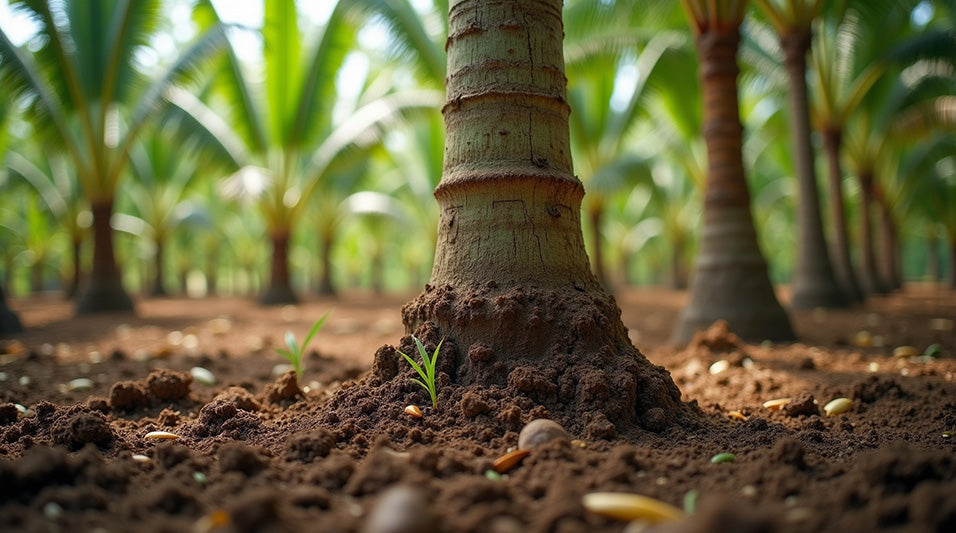Manures and fertilizers are to be applied to palm basins using a proper scientific method to achieve enhanced vegetative growth and productivity. It will enable better nutrient uptake and utilization by the tree.
Since most of the feeding roots are seen within a radius of 2 m from the tree trunk, manures, and fertilizers are to be applied around the palm by digging circular basins of 1.8 to 2m radius and 20 cm depth during August-September and a green leaf or compost or Farm yard manure may be spread @ 50 kg/palm basin. The remaining 2/3rd of the chemical fertilizers may be spread over the green leaf/FYM/Compost and covered with soil. After the receipt of summer showers in May-June, one-third of the recommended fertilizers may be spread around the palms within a radius of 1.8 to 2m from the trunk and forked into the soil.
In acidic soils, apply lime or dolomite to correct the soil pH and thereby ensure effective nutrient uptake. Lime should not be applied along with chemical fertilizers.
The following things are to be taken care of while digging the basin:
- Avoid damaging active roots as much as possible. Damaging the roots may invite soil pathogens causing disease.
- Do not dig the soil near to tree trunk at a depth of 20 cm.
- Ensure that a gradual slope is made starting from the tree trunk to the outermost end of the circular basin.
- The outermost circle should have a depth of 20 cm. ,(ie, at a distance of 1.8 to 2m.away from tree trunk).
|
One or two photographs of the Base opening method and fertilizer application may be inserted here. |
Application of fertilizers through a drip irrigation system is another option in which the quantity of fertilizers shall be reduced by half of the recommended dose. This method is known as fertigation. In this system, 70 g of Urea, 60 g of DAP, and 170 g of Muriate of Potash are recommended for a single application for one adult tree. Commercial phosphoric acid can also be used as a source of phosphorus. Fertigation may be done seven times a year to get the required nutrients at the recommended dose. Ensure that, there will be a fertilizer mixing and filtering unit attached to the drip irrigation system to avoid clogging in the supply pipeline of the system.
If you want to reduce the labor cost for opening the coconut basin, it is suggested that one-half portion of the basin only be opened in a year, and the other half of the basin may be opened during the next year.

In case of scarcity of green leaf manure, you can directly grow leguminous cover crops such as Pueraria phaseoloides, Mimosa invisa, and Calopogonium mucoid as green manures to supply biologically fixed nitrogen and easily decomposable biomass to coconut. Around 50 % of the nitrogen fertilizer requirement shall be compensated by growing the above cover crops. In sandy soils, growing Glyricidia as a green manure crop would be ideal.
Sow cowpea seeds more towards the periphery of basins taken at a radius of 2.0 m from the base of the palm for green manure during April-May with the onset of pre-monsoon showers. Uproot the entire plants and incorporate them into the soil during August-September and cover the basins with soil. This will increase the water-holding capacity of the soil.
Calapagonium can be grown either as green manure or cover crop. Tephrosia is especially suited for planting around seedling pits for summer shade and as a source of green manure in the rainy season.
